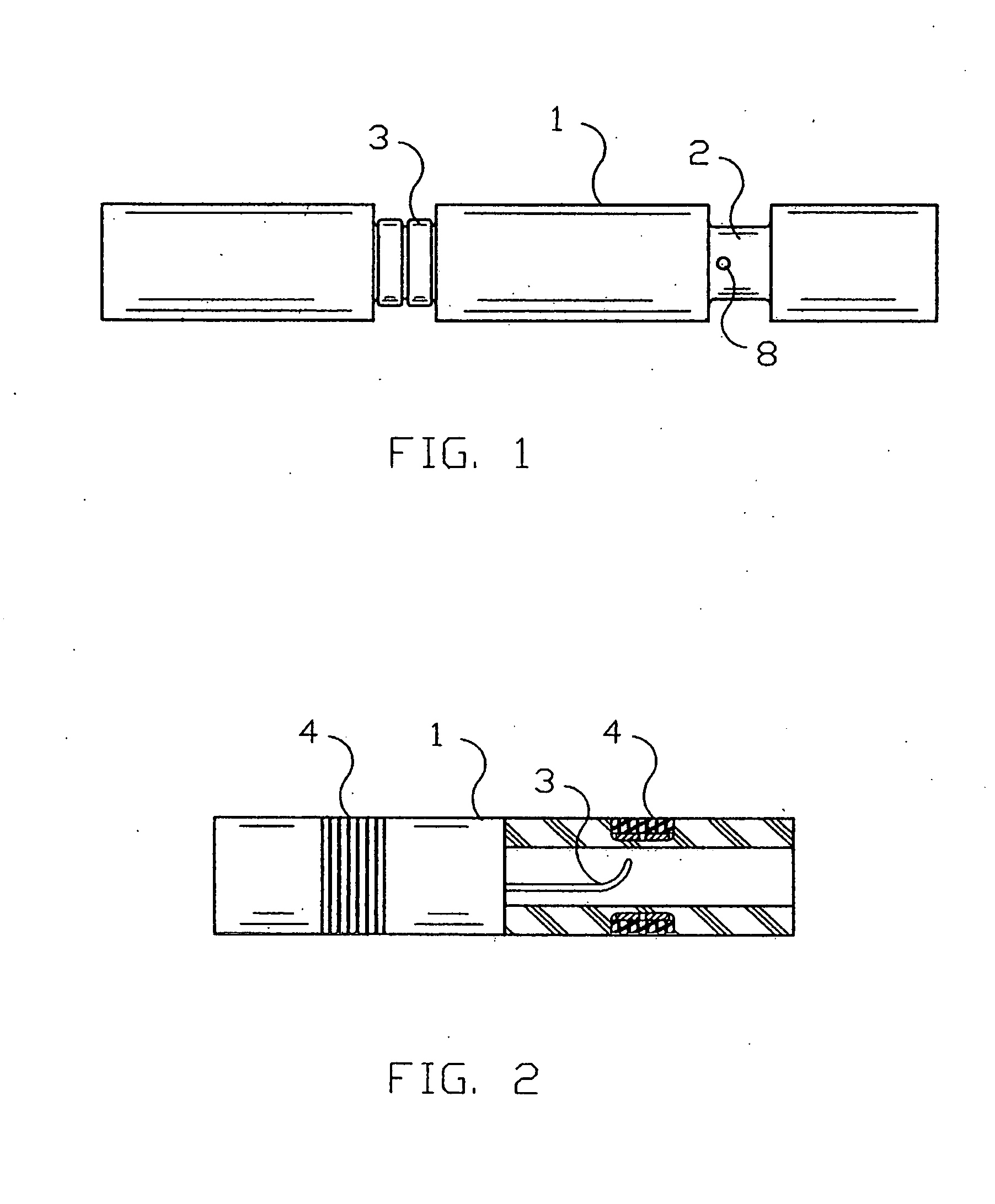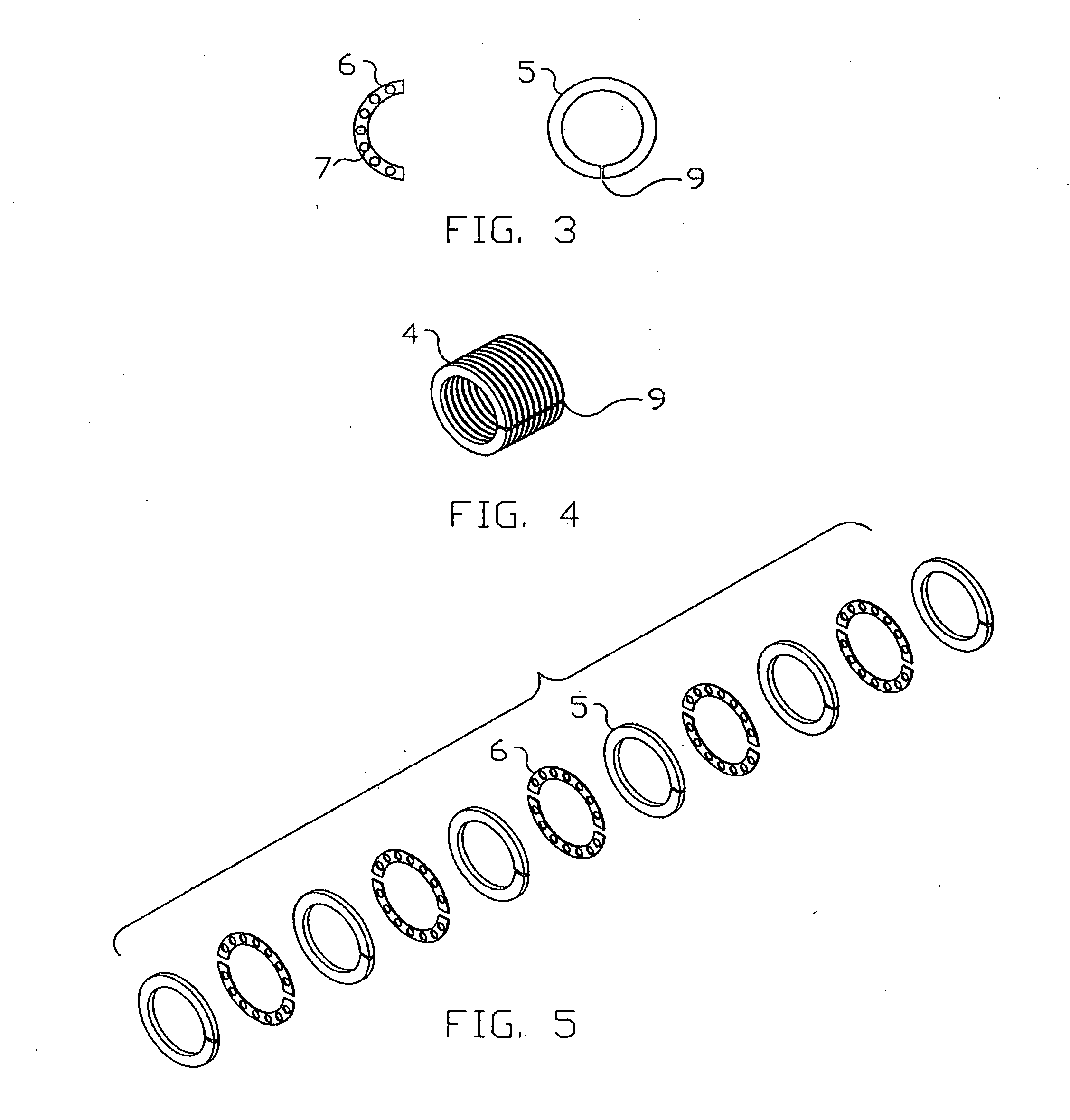Composite flexible and conductive catheter electrode
a flexible, conductive and catheter technology, applied in the field of electrophysiological catheter electrode bands, can solve the problems of limiting the flexibility of the catheter, the inability of the catheter to reach a desired area, and the possibility of rigid metal bands sliding off the catheter, and being lost inside the patien
- Summary
- Abstract
- Description
- Claims
- Application Information
AI Technical Summary
Benefits of technology
Problems solved by technology
Method used
Image
Examples
Embodiment Construction
[0038]FIG. 4 illustrates an assembled composite flexible and conductive electrode band 4 shown in perspective view before its assembly onto a cardiac catheter tube 1, where it performs the function of an electrode. The cylindrically shaped band 4 is a composite composed of flexible, ring shaped elements 5 and of ring shaped conductive elements 6, which are shown in FIG. 3. These component elements are arranged in an alternating pattern of flexible elements 5 and conductive elements 6 in the manner as shown in the exploded perspective illustration in FIG. 5. Uninterrupted electrical currents are carried from inside hole 8 through the wall in wire groove 2 to the outside surface of the band 4 by means of conductive element 6. Conductive element 6 is made from a thin metal (examples are gold, platinum, silver, stainless steel, platinum / iridium alloy, plated cooper or other suitable metal) sheet between 0.0005″-0.150″ in thickness, from which the shape that is shown in FIG. 3 is die sta...
PUM
| Property | Measurement | Unit |
|---|---|---|
| flexible | aaaaa | aaaaa |
| width | aaaaa | aaaaa |
| conductive | aaaaa | aaaaa |
Abstract
Description
Claims
Application Information
 Login to View More
Login to View More - R&D
- Intellectual Property
- Life Sciences
- Materials
- Tech Scout
- Unparalleled Data Quality
- Higher Quality Content
- 60% Fewer Hallucinations
Browse by: Latest US Patents, China's latest patents, Technical Efficacy Thesaurus, Application Domain, Technology Topic, Popular Technical Reports.
© 2025 PatSnap. All rights reserved.Legal|Privacy policy|Modern Slavery Act Transparency Statement|Sitemap|About US| Contact US: help@patsnap.com



